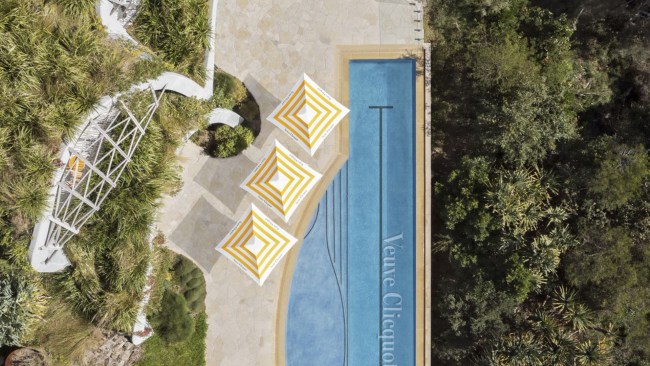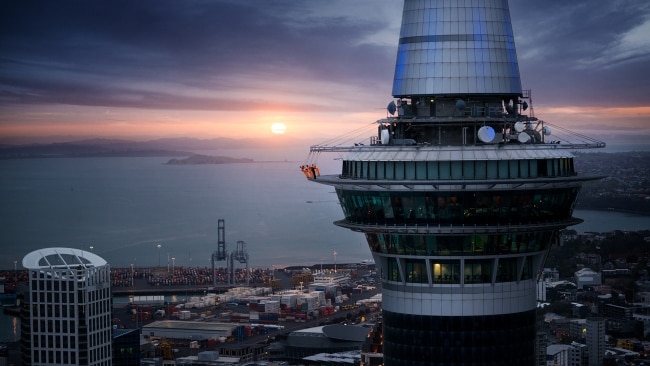Hello, motu
SWIM with rays off a private island in French Polynesia.

TARANO the boatman is in charge of our 9m-long outrigger canoe as we skim across a lagoon off the northwest coast of the island of Moorea, in the Windward group of French Polynesia. He is taking us to what could constitute the world's most unusual art gallery.
Submerged on the ocean floor off the village of Papetoai, lying on their backs, is a scattering of 10 carved stone tikis, up to 2m in length, their bulging eyes staring up at us as we snorkel. "They are a homage to our ancestors who threw all their beliefs into the sea," says Maire, our guide. "French Polynesia was colonised by Europeans at the end of the 18th century and a lot of our stone idols were destroyed. We need to reclaim our culture."
The volcanic-stone sculpture garden is the work of local artisan Tihoti Guy, who had them hauled here in 1998, and the most frequent visitors to this unique assembly usually are black or lemon-tipped sharks and spotted leopard rays. Like Maire, Tihoti is passionate about preserving the traditions and old-time tales of French Polynesia and, in particular, the legends of the gods of the heart-shaped island of Moorea, just to the northwest of the international gateway of Tahiti across the romantically named Sea of the Moon.
Moorea is so close to the capital, in fact, that on the 10-minute flight across, no sooner does the cabin attendant ask passengers to ensure that seatbelts are fastened and tray-tables placed upright for take-off than she requests they remain that way for landing.
Sightseeing here is resoundingly in, on and of the water, and English is widely spoken, although communication can be zany. At our hotel desk this morning an eastern European guest asks the French receptionist, "What is this thing called a motu?" She replies, "A motu is a small isle." She is actually using the French word for island, ile, pronounced as eel. "I do not want to see an eel," he protests. "I want to see this thing called a motu."
I tell Maire about this story and she roars with laughter. I have the feeling this entrepreneurial operator will track down the tourist later today for a crash course in Polynesian culture. Meantime, Maire has us back in the warm water to swim with manta rays. Tarano simultaneously feeds hunks of tuna to the rays and fends them off as they swarm about us, swishing against our arms and legs. Their skin feels spongy, like a slightly slimy kitchen cloth; they are coolly elegant creatures, so swift and aerodynamic with their triangular shape, almost like fighter planes, and they are nosy, too, I discover, with a penchant for investigating cleavage.
Tahitian-born Maire and her husband Jean-Pierre, a happy exile from the French mainland, run tours of the lagoon that include snorkelling and swimming, cruises on the classic wooden outrigger and lunch on their private island of Motu Moea. "It means island of dreams," Maire says. It is the tropical idyll writ large and lazy, with a distinct Gilligan's Island vibe. The motu is about 8 sq ha, and Maire and Jean-Pierre rent about half of that area to other operators, reserving the best location for their thatched and ramshackle house beside a coral-strewn beach fringed with palms, pandanus, red-barked mikimiki trees, white-flowering kahaia and casuarinas. Seashell chimes the size of chandeliers hang from branches, fishing nets are strewn over glossy bushes and I count at least six convivial groupings of chairs in which to sit and idly contemplate, life, art and the meaning of lunch.
Flowers sprout straight from the sand, moray eels dart in the shallows, wading birds strut the beach and chickens scrabble about. Maire takes guests on tours of her natural apothecary, explaining which trees and bushes have leaves, sap and bark that can be used for medicinal purposes. The liquid from the waxy leaves of the naupata tree, for example, makes an all-natural eyedrop. "This is also my supermarket," she says with a laugh, as she shows us an evergreen morinda citrifolia, or nono tree, its breadfruit-like fruit prized to promote virility and arrest ageing. This hyped-up Polynesian Viagra is sold well beyond the shores of myriad Pacific isles and does seem to have had more spin than a wind farm.
The highlight of the day-long tour is lunch, served under the palms, our feet in the sand. There's coconut crab (pre-cracked, or small mallet provided for more vigorous diners), prawns in the shell, grilled mahi mahi that has been freshly caught by Tarano, and a colourful salad with avocados from Jean-Pierre's garden lightly dressed with a home-made lemony mayonnaise. The poisson cru is the best I have tasted and Maire reveals the secret ingredient is "the surprise" addition of a few celery stalks and leaves. Raw red tuna has been sliced and mixed in a bowl with diced tomatoes, grated carrot and finely chopped onions, then in goes the celery, a good pinch of salt and the juice of half a lime.
Grated coconut has been squeezed over the mixture, strained through a fine cotton cloth. "No pepper," says Jean-Pierre's helper Jean-Luc; he has been sitting at a special coconut grating stool preparing the white, milky flesh for the dish as chickens look on, heads inquisitively cocked, and gulls and terns circle overhead.
For dessert, Jean-Pierre produces flaky pastry slices topped with glazed rose-pink papaya. He speaks little English but I understand when he suggests we swim in the aquarium. He means the lagoon, fluttering with multi-coloured fish, its waters a clear and coaxing blue. I ask if Maire and Jean-Pierre have had any famous guests on the motu and they say, almost causally, that Bill Gates had his 50th birthday here in 2005. A simple affair, apparently. Barefoot on the beach by the Sea of the Moon. C'est parfait.
Checklist
Maire and Jean-Pierre run half and full-day tours to order for individuals or small groups; transfers from local hotels included. More: www.maiaubeach.com.



